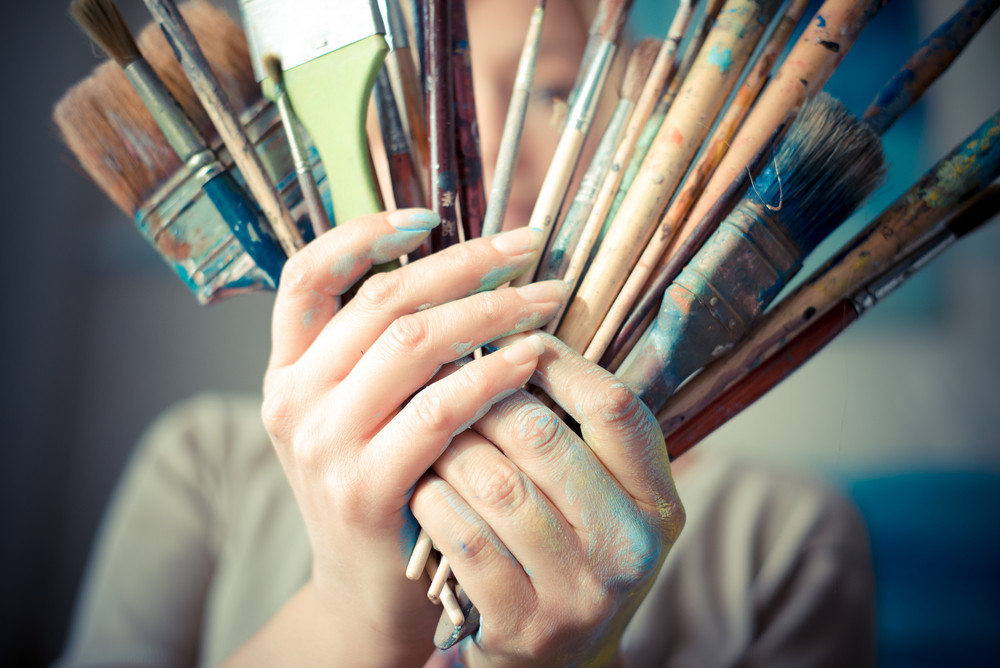Surface preparation is the most important part of a cabinet repainting project or any painting project for that matter. When not done right, you will have issues with paint adhesion, and if your surface has stains, your final results will be nothing to smile about.
However, when the preparation is done correctly, your painted cabinets will look awesome and the paint job will last much longer. Unlike painting drywall, preparing cabinets are much more involving and need greater attention to detail. We’ve done dozens of cabinet repaint projects in the Greater Columbus, Ohio Area and here is the typical process and tips you need for proper prep work.
- 1. Take the doors and drawers down
You might be tempted to repaint your cabinets while still attached, but this option will give you a harder time and the results will be less desirable. You will have a hard time sanding and painting the inner edges of your cabinet doors and around hinges and hardware. Removing the cabinet doors and drawers is actually pretty easy
When taking down your drawers and doors, be sure to label them properly to make reassembling them much easier. Go ahead and remove all the hinges, drawer pulls, handles and other hardware, and label them as well.
- 2. Clean the Cabinets Thoroughly
The second step is give everything a good cleaning and get rid of any dirt or grease. Paint and Primer doesn’t bond well with greasy and dirty surfaces. Cabinets above a stove and below the sink are usually the worst and need to be carefully cleaned before sanding.
There’re numerous cleaning products out there you can use when prepping your cabinets for painting. These include dish soap, denatured alcohol, liquid de-glosser and TSP (trisodium phosphate). Denatured alcohol is great for cutting through tough grease, stains, and sticker adhesive. A de-glosser will come in handy when removing protective lacquer finishes on glossy surfaces.
- 3. Sand your cabinets
Most of the prep labor goes into sanding. While some liquid de-glosser and primer products advertise no sanding required on their label, you should always sand. Sanding takes off the glossy lacquer on top, exposing the bare wood so that the primer and paint can better adhere to it.
When it comes to actual sanding, you have the following two options;
- Electric Sander: while not a must, using an electric sander makes your work easier especially if you’re sanding multiple cabinet doors. Sanding the entire cabinets using sandpaper can be quite tiresome, may not be effective and will take much longer. The electric sander is however only best for flat, wide surfaces such as cabinet door faces. For narrow paneled parts, you may need sandpaper.
- Sandpaper Grit: Sandpaper is best for a smaller cabinet repaint project and for sanding those narrow and grooved areas. 120 and 150 grit both work great for us in sanding cabinets and exposing bare wood. If you’re sanding in between primer coats, you can use the 220 grit.
- 4. Remove Dust
When painting cabinets, dust is always your enemy. Even after a thorough initial cleaning and sanding, dust can still mess up your paint job. Always wipe out the dust after each sanding using a tack cloth or a damp rag. If possible, do the sanding away from where you will be painting your cabinets from to prevent dust from getting back onto your surfaces.
- 5. Caulk the holes and cracks
If your cabinets have unnecessary holes or cracked panels, you need to fill up the gaps before applying the primer. You should preferably use white paintable caulking, not the clear one. Sherwin Williams has a quick dry caulk that dries within one hour, but any reputable brand will do. Before applying the caulk, be sure to remove all the sanding dust from the cracks.
- 6. Priming
Priming prepares the wood surface and makes it easy for paint to stick to it. Additionally, it can be used to cover up stains and previous paint that could not be removed. The best primer to use when prepping cabinets is either shellac primer or oil-based primer. This two dry hard and totally prevent stains from bleeding into your paint, unlike the latex primer. Apply the primer on all the surfaces evenly, preferably two coats and let the primer dry completely before painting.
I hope these tips help you make your cabinet prep for painting much easier. If you need any professional help with kitchen cabinet painting in the Greater Columbus, Ohio Area, call us today and we will be happy to help.
